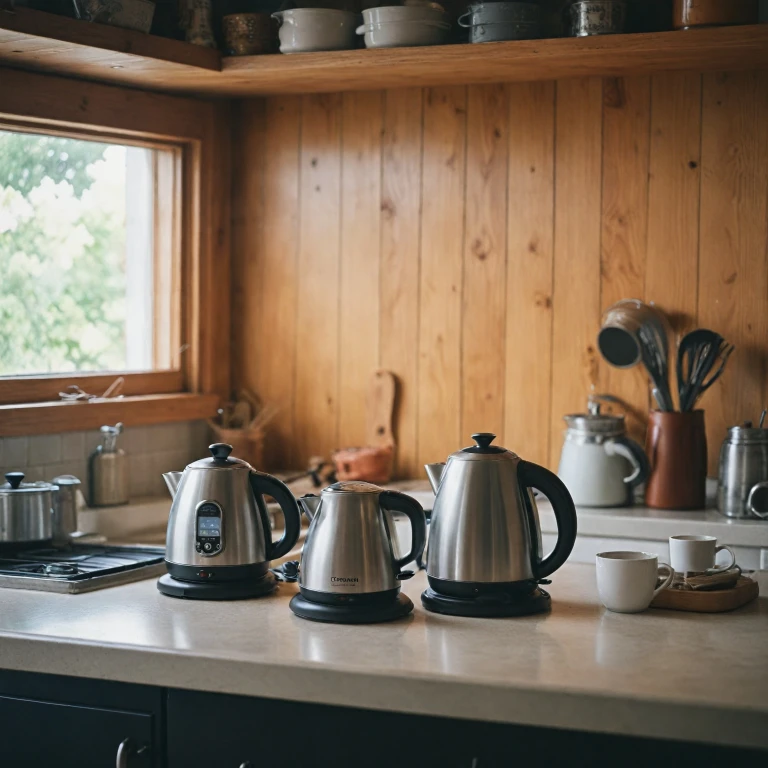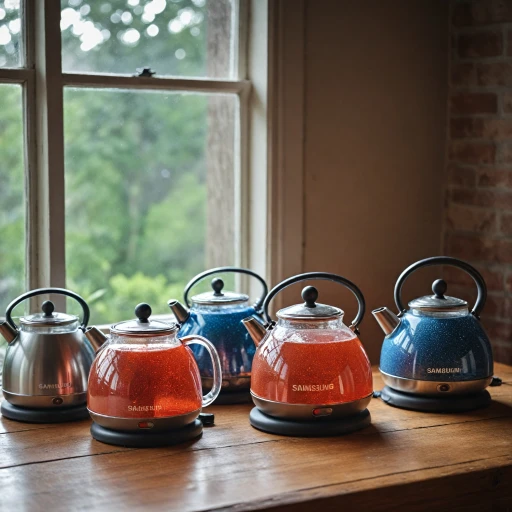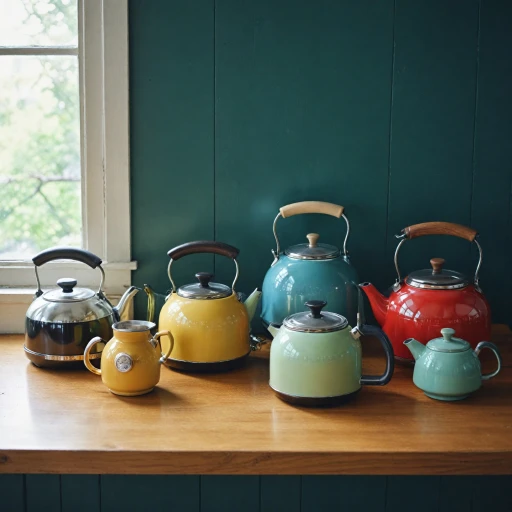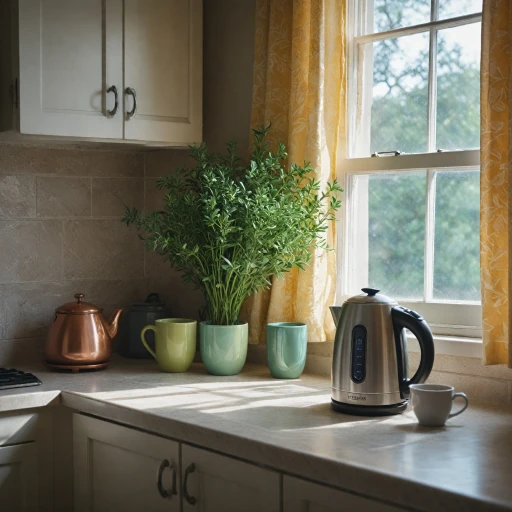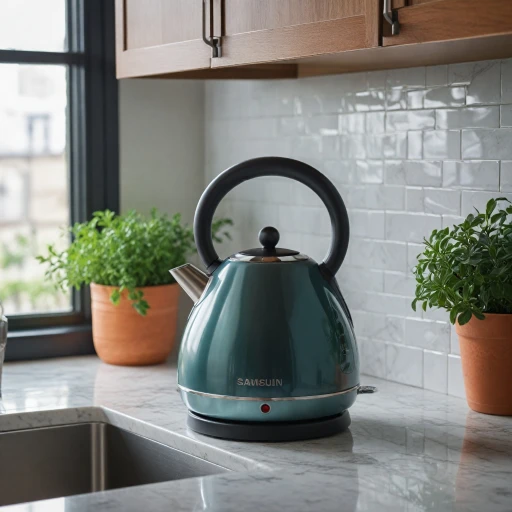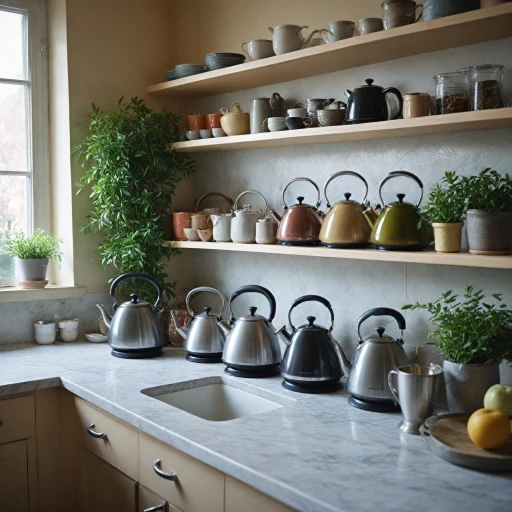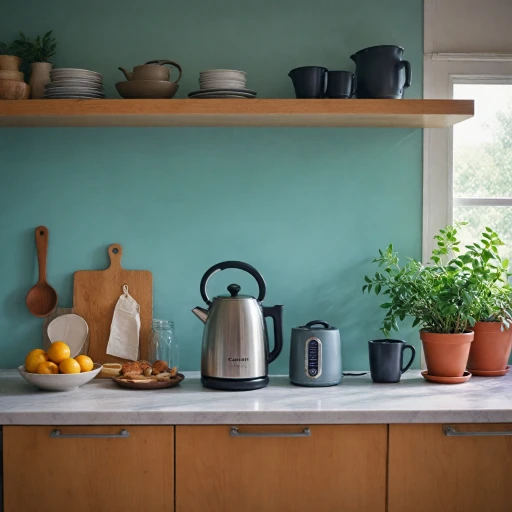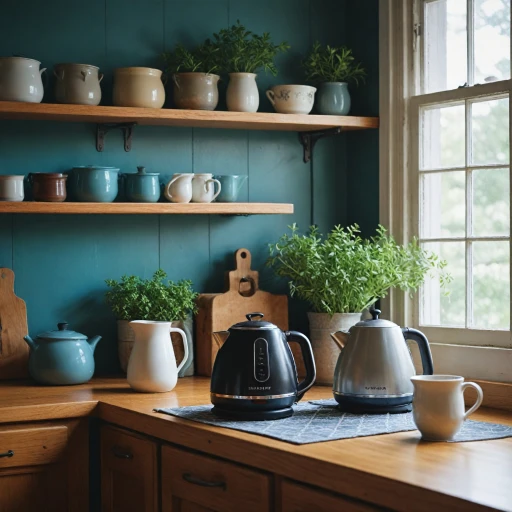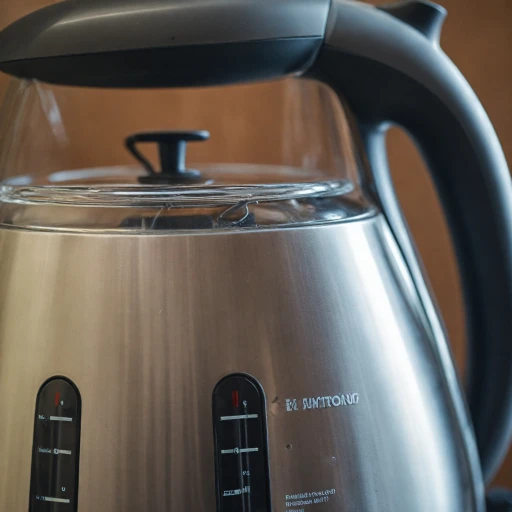
Understanding the Basics
Kettles in Focus: Electric vs. Stovetop
In the quest to choose the right electric kettle or stovetop kettle for your kitchen, understanding the basic distinctions is paramount. Both types of kettles fulfill the basic function of boiling water, yet they achieve this goal in different ways and with varying levels of efficiency.
Electric Kettles: These modern appliances are equipped with a built-in heating element that quickly heats water to the desired temperature. Ideal for those who need to boil water rapidly, electric kettles often come with temperature control features, allowing users to select precise heating levels suited for brewing tea or preparing pour-over coffee.
Stovetop Kettles: Traditional and often crafted from materials like stainless steel, stovetop kettles require the application of an external heat source, such as a gas or electric stovetop. They may take longer to heat water than their electric counterparts, but their classic design can add a touch of nostalgia and style to any kitchen.
When deliberating between electric and stovetop kettles, consider factors such as speed, energy usage, and how each type fares when it comes to safety features and maintenance. As you dive deeper into other sections, these aspects will further illustrate which kettle might be the best fit for your lifestyle.
Efficiency and Speed
Speed and Efficiency: Electric vs. Stovetop
When choosing between an electric kettle and a stovetop kettle, efficiency and speed are often key factors. For those who prioritize a quick cup of tea or coffee, there are significant differences to consider. Electric kettles are designed specifically for heating water, allowing them to operate with remarkable speed. The presence of a heating element inside the kettle means that your water can reach boiling temperatures much faster than a traditional stovetop method. This is particularly beneficial in situations where time is of the essence. On the contrary, stovetop kettles rely on an external heat source, such as a gas or electric stovetop, making them generally slower to boil water. While this might not be an issue for casual brewers, those who often require rapid boiling might find the delay noteworthy. A notable advantage of the electric kettle is its ability to offer precise temperature control. Some models come equipped with temperature settings, allowing you to heat water to the desired degree for specialized beverages like pour-over coffee or delicate teas. For efficiency-conscious individuals, electric kettles consume less energy relative to stovetop kettles as they experience minimal heat loss during operation. While both types present unique benefits, the accelerated boiling times and energy efficiency of electric kettles make them a popular choice for kitchens craving convenience. For more guidance on how to select the perfect electric kettle, you can check out this comprehensive guide.Safety Features
Prioritizing User Safety with Cutting-Edge Features
When choosing between kettles, safety is paramount. Electric kettles have advanced significantly in terms of safety features. One of the standout aspects is the automatic shut-off function. The kettle electric automatically stops heating once the water reaches the desired boiling point, preventing the kettle from boiling dry, which is a hazard often overlooked in traditional stovetop kettles. Many electric kettles are also equipped with boil-dry protection. This feature ensures that if the kettle is mistakenly filled inadequately or not at all, the heating element will not engage, considerably reducing the risk of damage and enhancing kitchen safety. Temperature control is another significant feature in some top-tier electric models, such as the Fellow Stagg or Stagg EKG. These offer adjustable settings to heat water to specific temperatures ideal for brewing different types of tea or coffee. This precision not only improves the taste but also saves energy. Furthermore, the design of electric kettles often includes heat-resistant handles and cool-touch exteriors, ensuring that handling, pouring, and accessing freshly boiled water is safe. In contrast, stovetop kettles rely more on user vigilance to prevent burns or mishaps. For a detailed exploration of how to make the most of these advanced controls and features, one can glean valuable insights from mastering the control panel of your electric kettle in our related article. In essence, while stovetop kettles bring their own rustic charm and direct heat advantages, electric kettles stand out for their sophisticated approach to user safety. With technology advancing, these features make electric kettles not just a modern convenience but a staple for ensuring a safer kitchen environment.Cost Considerations
Cost Efficiency: A Closer Look at Your Budget
When weighing the financial aspects of electric kettles versus their stovetop counterparts, several factors demand your attention. First, let's consider the upfront cost. Electric kettles often present a higher initial price point compared to traditional stovetop kettles. However, it's crucial to recognize that this initial investment dovetails into potential savings over time.- Energy Consumption: Electric kettles are designed for efficiency. By harnessing electricity, they heat water faster and more precisely, often with temperature control, leading to reduced energy usage over time compared to the prolonged heating on a gas stovetop.
- Long-term Savings: Although gas might seem cheaper per unit of energy, an electric heating element’s swift efficiency balances out the costs, particularly in households that frequently need to boil water efficiently, whether for tea, coffee, or cooking.
- Durability Matters: Both electric and stovetop kettles can be durable, but the longevity of each can influence cost considerations. Stainless steel electric kettles with proper maintenance could potentially last longer than cheaper stovetop options, maintaining their performance over years.

